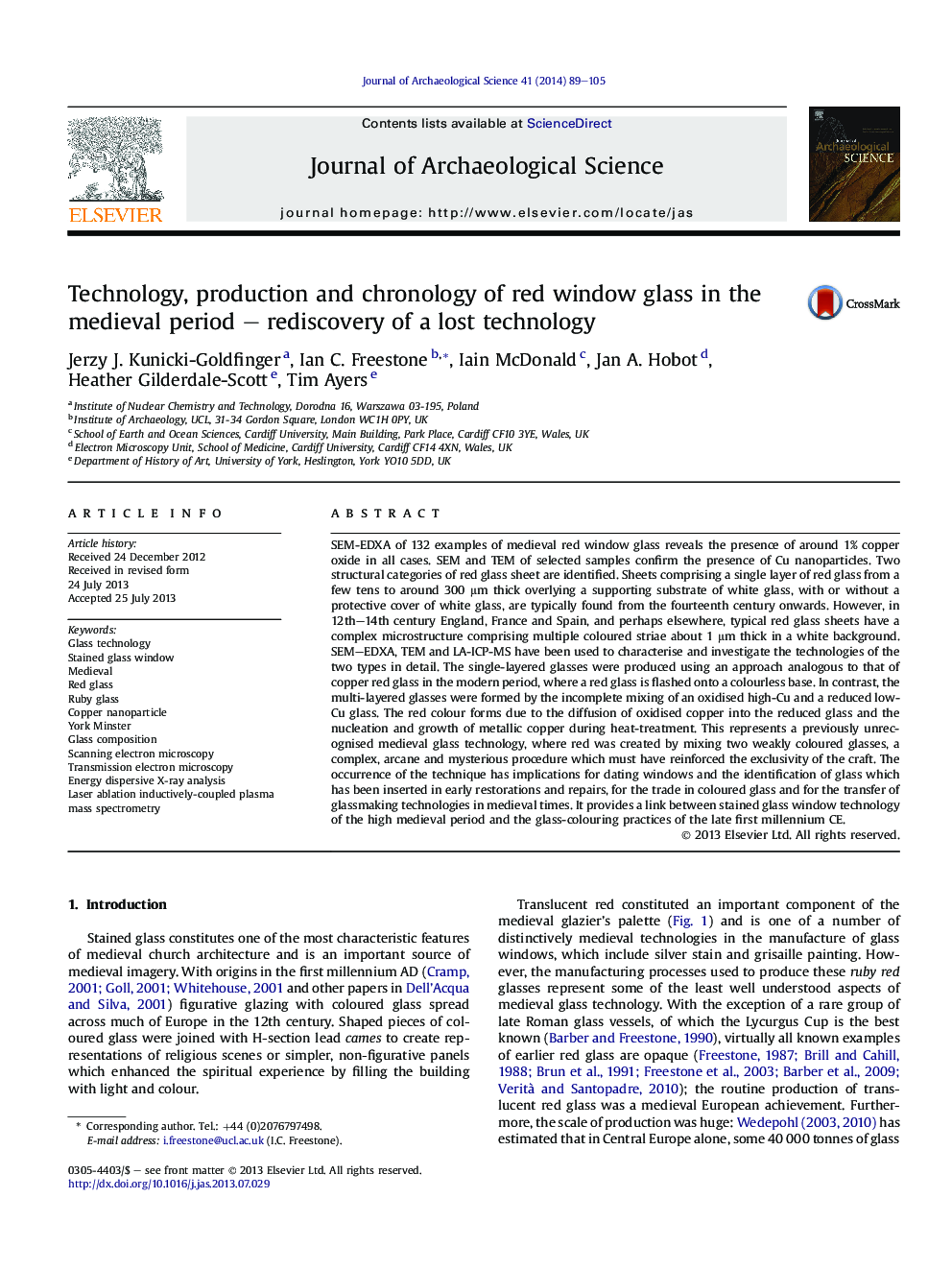| کد مقاله | کد نشریه | سال انتشار | مقاله انگلیسی | نسخه تمام متن |
|---|---|---|---|---|
| 7443676 | 1483919 | 2014 | 17 صفحه PDF | دانلود رایگان |
عنوان انگلیسی مقاله ISI
Technology, production and chronology of red window glass in the medieval period - rediscovery of a lost technology
ترجمه فارسی عنوان
فناوری، تولید و زمانبندی شیشه قرمز در دوره قرون وسطایی - کشف فناوری از دست رفته
دانلود مقاله + سفارش ترجمه
دانلود مقاله ISI انگلیسی
رایگان برای ایرانیان
کلمات کلیدی
Energy dispersive X-ray analysis - تجزیه و تحلیل اشعه ایکس پراکنده انرژیGlass composition - ترکیب شیشهGlass technology - تکنولوژی شیشهMedieval - قرون وسطیScanning electron microscopy - میکروسکوپ الکترونی روبشیTransmission electron microscopy - میکروسکوپ الکترونی عبوریcopper nanoparticle - نانوذره مس
موضوعات مرتبط
مهندسی و علوم پایه
مهندسی مواد
دانش مواد (عمومی)
چکیده انگلیسی
SEM-EDXA of 132 examples of medieval red window glass reveals the presence of around 1% copper oxide in all cases. SEM and TEM of selected samples confirm the presence of Cu nanoparticles. Two structural categories of red glass sheet are identified. Sheets comprising a single layer of red glass from a few tens to around 300 μm thick overlying a supporting substrate of white glass, with or without a protective cover of white glass, are typically found from the fourteenth century onwards. However, in 12th-14th century England, France and Spain, and perhaps elsewhere, typical red glass sheets have a complex microstructure comprising multiple coloured striae about 1 μm thick in a white background. SEM-EDXA, TEM and LA-ICP-MS have been used to characterise and investigate the technologies of the two types in detail. The single-layered glasses were produced using an approach analogous to that of copper red glass in the modern period, where a red glass is flashed onto a colourless base. In contrast, the multi-layered glasses were formed by the incomplete mixing of an oxidised high-Cu and a reduced low-Cu glass. The red colour forms due to the diffusion of oxidised copper into the reduced glass and the nucleation and growth of metallic copper during heat-treatment. This represents a previously unrecognised medieval glass technology, where red was created by mixing two weakly coloured glasses, a complex, arcane and mysterious procedure which must have reinforced the exclusivity of the craft. The occurrence of the technique has implications for dating windows and the identification of glass which has been inserted in early restorations and repairs, for the trade in coloured glass and for the transfer of glassmaking technologies in medieval times. It provides a link between stained glass window technology of the high medieval period and the glass-colouring practices of the late first millennium CE.
ناشر
Database: Elsevier - ScienceDirect (ساینس دایرکت)
Journal: Journal of Archaeological Science - Volume 41, January 2014, Pages 89-105
Journal: Journal of Archaeological Science - Volume 41, January 2014, Pages 89-105
نویسندگان
Jerzy J. Kunicki-Goldfinger, Ian C. Freestone, Iain McDonald, Jan A. Hobot, Heather Gilderdale-Scott, Tim Ayers,
